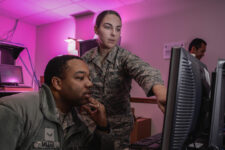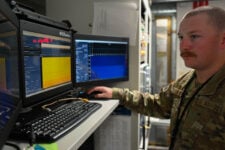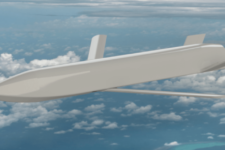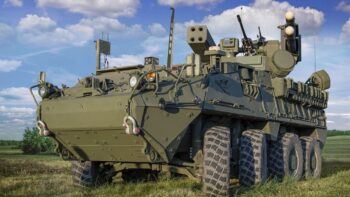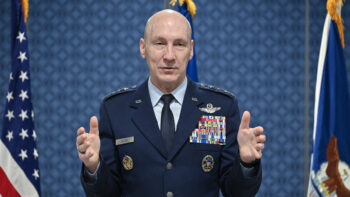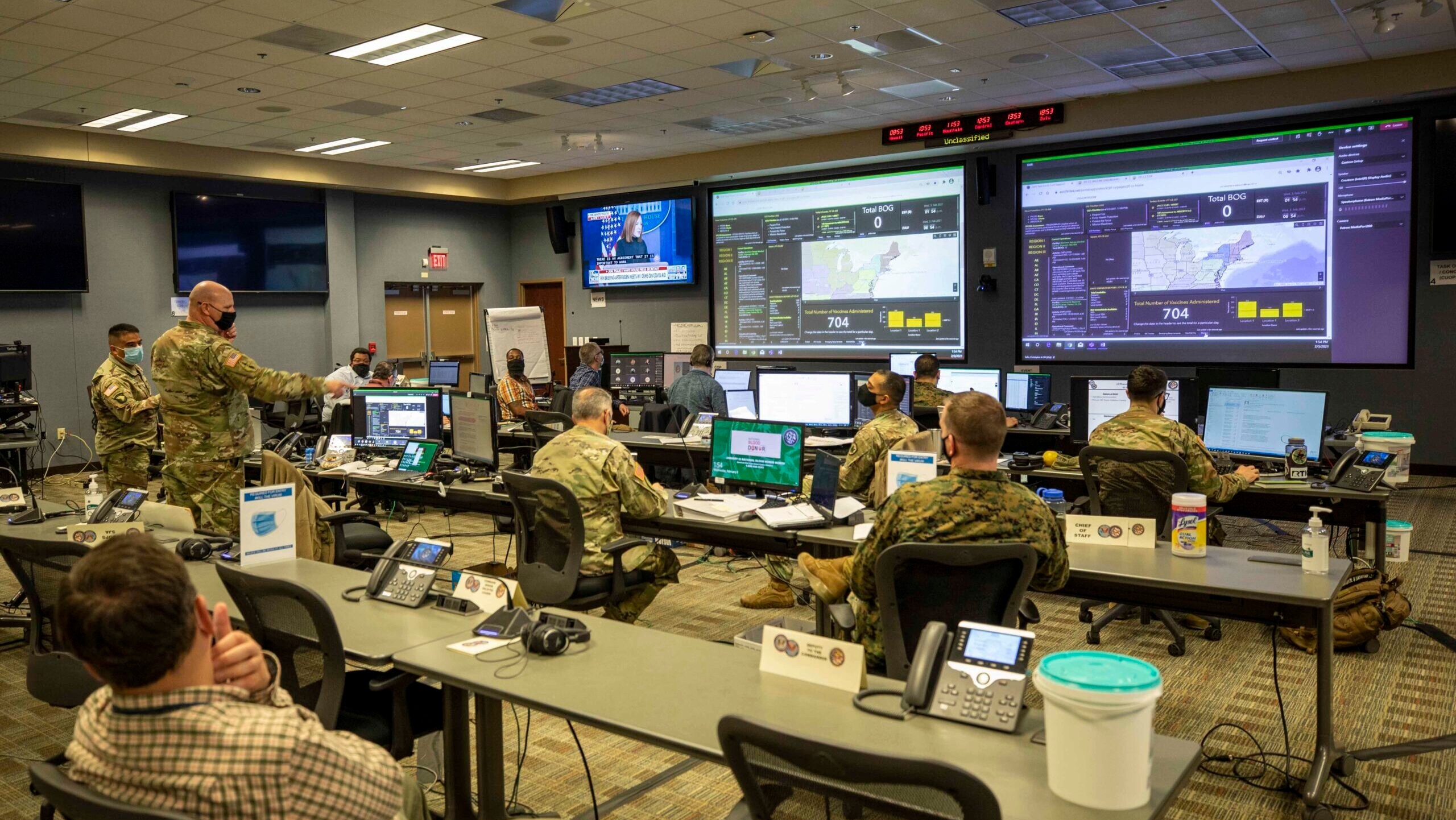
Army Col. Christopher Caldwell, the J3 operations director, details the capabilities of the JTF-CS common operating picture to Commanding General Maj. Gen. Jeff Van and JTF-CS staff during a Joint All-Domain Command & Control System demonstration on Feb. 3, 2021. (U.S. Navy photo by Mass Communication Specialist 2nd Class Michael H. Lehman/Released)
WASHINGTON – Hollywood has long portrayed commanders standing in high-tech HQs, watching their far-flung forces on a massive screen and moving them like units in some vast video game. Pentagon’s push for a global meta-network known as CJADC2, connecting US and allied forces across land, sea, air, space, and cyberspace, seems like it could finally realize that fictional vision.
But as officers and engineers thrash out how CJADC2 would actually work in a series of Global Information Dominance Experiments, the GIDE director now said that while any single command center could look like that, what they really need is something more decentralized and diverse.
Instead of a single, standardized, god’s-eye-view, Col. Matthew Strohmeyer said Monday, the goal of GIDE is a constantly evolving ecoystem of different applications, analytics, and interfaces, customized to different users at every level, from four-star theater commanders to mid-grade staffer officers to junior leaders on the battlefield, that will all draw — in different ways — on the same vast pool of data, shared across the different armed services worldwide.
The Pentagon’s Chief Digital & AI Office, which oversees the GIDE experiments, will provide some standard tools, Strohmeyer said. Contractors may build many more for different commands across the Department of Defense. But the ultimate goal is to empower even junior personnel to build their own apps as needed.
RELATED: Empowered edge versus the centralization trap: Who will wield AI better, the US or China?
During a C4ISRnet webinar, Strohmeyer was asked how close the Pentagon’s CJADC2 project was to creating a single “Common Operating Picture” (COP) that pulled together all the data commanders needed to make decisions. His answer was nuanced:
“We have tools … that we’re using in operations right now, that can allow them [commanders] to take very disparate data sets at multiple classification levels and make operational decisions on them,” Strohmeyer said. “So, in some sense, we have that [already].”
But “the goal is not necessarily to create that one COP that can see essentially everything we have … one Common Operating Picture to rule them all,” the colonel continued. “We need to have a heterogeneous mix of mission applications to get after all the things that we are doing.”
At the Pentagon’s CDAO, he said, “we don’t believe it’s our job to really direct or mandate exactly how you would use your data at your level, because it’s the warfighting users at every echelon [who have] the best knowledge [of] what their mission is, how they can accomplish that mission best.”
Instead, Strohmeyer argued, “it’s our job to unlock that data and to give them the tools that might help them, [so] any warfighter can use whatever application they want.”
Show Me The Data
“Unlocking the data” is tremendously difficult. “There are certainly a lot of technical hurdles,” Strohmeyer acknowledged. “It’s like multi-level chess.”
The most basic level is “data awareness,” he said. “Sometimes we don’t really fully know where exactly does that data live, and then who is the owner of said data, and can we get an agreement to be able to share that data?”
Once the CJADC2 team has access to a desired dataset, Strohmeyer went on, it may have to reformat or restructure it for use outside its original context. Some data isn’t structured at all, but buried in the text of reports, PDFs, or PowerPoint slides, in which case generative AIs such as Large Language Models could be used to digest it — although there’s “a long ways to go” before LLMs are reliable, Strohmeyer warned.
But even when data is clearly labeled and well-organized, it’s often in a proprietary, bespoke or simply obscure format that other systems can’t interpret. Data stored in Army system may not be legible on Navy ones; data from intelligence networks may not be translate to operational or logistics ones.
One obvious solution might be to force everyone to format their data the same way, but such uniform, universal standards have proven painfully difficult to define, let alone impose. “We just kept on going down the rabbit trail, trying to find what that common data standard was,” he said. “Let’s just go out and experiment and see what works and what is operationally useful.”
Instead of a single super-standard for all data, Strohmeyer suggested, a more practical solution might be mandating Application Programming Interfaces (APIs) that automatically translate between otherwise incompatible systems. In fact, before an organization is allowed to “play” in the GIDE experiments, he said, they must provide “open and common access to data,” whether through an API or another automatic translation tool.
Only once the data is accessible and intelligible, Strohmeyer said, is it possible to start building applications to use it. But while the data-wrangling is a prolonged, laborious, and often tedious process, building apps and analytics is an opportunity for ingenuity and adaptation.
For users participating in the GIDE experiments, he said, “it was relatively transparent to you [users] that a lot of really hard data integration could happen behind the scenes, and you were just seeing the fruits — but you could use a piece of software [to] make decisions better and faster.”
Speed And Risk
Adaptability requires rapid feedback from a wide range of users, so Strohmeyer’s team has accelerated their already blistering pace, adding smaller weekly workshops to their ambitious quarterly experiments.
Since GIDE relaunched in February of last year, it’s conducted six high-level Global Information Dominance Experiments, averaging one roughly every three months. But, Strohmeyer said, “one of the other main lessons that we learned, actually in the last two GIDEs, is that that wasn’t fast enough.”
So while the 90-day cycle will continue, a series of weekly “mini-GIDEs” will now be nested within it.
“That allows us to have operational users with a much more tailored workflow, and allow them to get iterations in software, to identify gaps in the data, identify issues of the software, so that we can learn more quickly,” Strohmeyer said.
“We are getting a lot of good feedback from everybody,” he said. “Sometimes we get negative feedback. … That’s good. We want that, because that helps us learn.”
In fact, part of the GIDE philosophy — inspired more by Silicon Valley startups than Washington bureaucracy — is an eagerness to “fail fast.” Sometimes known as “agile” development or DevSecOps, the basic strategy is to put nascent tech in the hands of real users, let them test it until something breaks, fix it quickly, and then let the users test the updated iteration until that breaks too.
It’s “an experimentation approach that is not only failure-tolerant, but actually failure seeking,” Strohmeyer said, ”to identify … what are areas that are working and not working.”
That attitude is counter-cultural for the Department of Defense, the colonel acknowledged. “People might say, ‘Well, it is super-risky to say that you’re going to do Department-level experiments every 90 days. That sounds like they’re just asking for failure. … Let’s do one every year.’”
But, Strohmeyer said, “what we’ve found is… there is an opportunity to seize initiative by going fast, by using speed as a weapon.”
What’s crucial is to keep rapidly innovating, updating, and adapting Strohmeyer said: “When it comes to AI and data and CJADC2, we don’t fully understand exactly what it’s going to look like, because the capabilities continue to evolve.”

